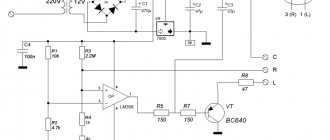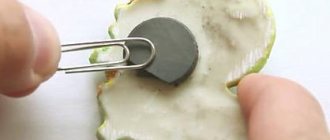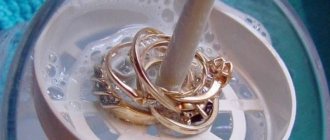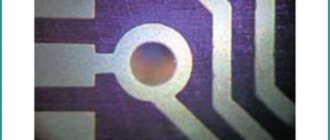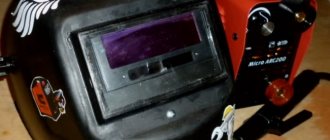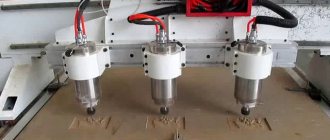DIY charger for Krona
In general, there are a lot of circuits for such chargers.
This article presents a simple and affordable option that will help you make a charger for Krona while saving money and effort. The proposed circuit based on charging for a mobile phone allows you to make a device with your own hands. The author of the video is blogger Aka Kasyan. By the way, a 9-volt battery is called Krona only in Russia and other countries that came from the USSR. In the world it is known as standard 6 f 22. Krona owes its name to a simple battery of the same standard, which was produced in the USSR.
Everything you need to assemble the device can be found in this Chinese store. Please note products with free shipping.
The battery crown is an assembly of series-connected batteries, a rather rare 4a standard. In general, there are 7 of them. Typically this is a nickel metal hydride type.
Charging schemes for battery Krona
It is recommended to charge the battery crown with a current of no more than 20 - 30 milliamps. It is recommended not to increase the current above 40 milliamps under any circumstances. The charger circuit is relatively simple and is based on a Chinese mobile phone charger. Cheap Chinese chargers come in two main types. Both, as a rule, are pulsed and implemented using self-oscillator circuits. The output provides a voltage of about 5 volts.
First type of charger
The first variety is the most popular. There is no control of the output voltage, but it can be changed by selecting a zener diode, which, as a rule, in such circuits are located in the input circuit. The zener diode is most often 4.7 - 5.1 volts. To charge the crown we need to have a voltage of about 10 volts. Therefore, we replace the zener diode with another one with the required voltage. It is also recommended to replace the electrolytic capacitor at the charger output. We replace it with 16 - 25 volts. Capacity from 47 to 220 microfarads.
Second type of charging
The second type - the circuit for charging mobile phones is a self-oscillator circuit, but with control of the output voltage through an optocoupler and a zener diode. In such circuits, either a regular zener diode or an adjustable one, like tl431, can be used as a controlling element. In this case, the most common zener diode is 4.7 volts.
We also replace the output electrolyte with high voltage. We select a 10 volt zener diode. As a result, charging began to output the voltage required for our purposes.
After remaking the charger, we assemble a current stabilization unit based on the lm317 microcircuit.
In principle, for such insignificant currents you can do without a microcircuit. Instead, install one quenching resistor, but preferably good stabilization. Still, the battery crown is not a cheap type of battery. The stabilization current will depend on the resistance of resistor r1; the calculation program for this microcircuit can be found on the Internet.
This scheme works very simply. The LED will light up when the output is loaded. In this case, Krona, since there is a voltage drop across resistor r2. As the battery charges, the current in the circuit will drop and at one point the voltage drop across each resistor will be insufficient. The LED will simply go out. This will be at the end of the charging process, when the voltage on the Krona is equal to the voltage at the output of the charger. Consequently, further charging process will become impossible. In other words, an almost automatic principle.
You don’t have to worry about Krona, since the current at the end of the charging process is almost zero. There is no point in installing the lm317t microcircuit on a radiator due to the scanty charging current. It won't heat up at all.
In the end, all that remains is to attach a connector for the Crown to the output of the charger, which can be made from the second non-working Crown. And, of course, think about the housing for the device.
Charging for Krona from a dc-dc converter
If you take a small dc-dc converter board, then you can easily make USB charging for the crown. The converter module will increase the voltage of the USB port to the required 10-11 volts. And then along the circuit there is a current stabilizer on lm317 and that’s it.
What to look for when choosing
When choosing the right copy, it is important to pay attention to the following characteristics of the product:
- Rechargeable. The battery provides an opportunity to save money, because to restore functionality it is enough to connect it to the network via a charger.
- Manufacturer country. Products manufactured in China, even under a well-known brand, are not always of high quality.
- Type of electrolyte used. The battery life depends on this parameter.
When purchasing a product, you should check the production date. A battery that has been lying on a store shelf for a year loses about 20 percent of its capacity, so it is better to refuse such a purchase. Experts advise not to buy batteries for future use; it is better to buy them when necessary.
Among the many schemes for assembling chargers for Krona batteries, I found one that was relatively simple and affordable. By the way, the 9-volt battery, known in Russia and the CIS countries as “Krona,” has a 6F22 standard.
The battery consists of 7 4A nickel-metal hydride batteries connected in series. The recommended charging current is no more than 20-30 mA.
The charger is manufactured by redesigning a Chinese-made mobile phone charger.
There are 2 types of inexpensive chargers originating from China. They are pulsed, and both are based on self-oscillator circuits capable of delivering 5 V output.
The first type is the most common. It does not have control of the output voltage, but by selecting a zener diode, which is located in such circuits in the input circuit near the 1N4148 diode, you can obtain the desired voltage. Usually there are two types - 4.7 and 5.1 V.
To charge the Krona you need a voltage of about 10-11 V. This can be achieved by replacing the zener diode with one that has the appropriate voltage. It is also recommended to change the capacitor, which is located at the charging output. As a rule, it is 10 V. You need to install a 16-25 V capacitor with a capacity of 47-220 μF.
The second type of such circuits has control of the output voltage, implemented by installing an optocoupler and a zener diode.
Take a look at the principle of redesigning the second circuit.
It is necessary to remove all components located after the transformer, and leave only the unit that controls the output voltage. This unit consists of an optocoupler, a pair of resistors and a zener diode.
It is necessary to replace the diode rectifier, since manufacturers claim a charging current of 500 mA, and the maximum diode current is no more than 200 mA, although the peak current is about 450 mA. It's dangerous! In general, you need to install the FR107 diode. Thus, charging will produce the required voltage.
The next thing to do is to assemble a current stabilization unit, using the LM317 microcircuit as a basis. In general, you can get by with one quenching resistor instead of assembling a stabilization unit.
But in this example, preference is given to reliable stabilization, because the Krona battery is not the cheapest.
Resistor R1 affects the stabilization current. The calculation program can be downloaded in the Attached files at the end of the article.
The operating principle of this circuit is as follows:
When the Krona is connected, the LED lights up.
A voltage drop is created across resistor R2. Gradually, the current in the circuit decreases, and the voltage that allows the LED to light suddenly becomes insufficient. It simply goes out.
This occurs at the end of the charging process, when the battery voltage becomes equal to the charger voltage. The charging process stops and the current drops to almost zero.
Read also: Safety glasses for working with chemicals
The LM317 chip does not need to be installed on a radiator, unlike a charger for lithium batteries, because the charging current is very tiny.
All that remains is to attach the battery connector to the case, which can be made from a non-working battery.
battery connector
If you use a DC-DC converter, you will get a charger for the Krona via a USB port. like this charger for Ni-Mh batteries.
DC-DC converter Finished device
A huge number of household appliances use AA batteries as a power source. Most of them perform auxiliary functions, so the lack of power in children's toys or control panels brings only temporary inconvenience until new batteries are purchased. But, there are situations when there is nothing to replace a discharged battery, but this must be done right now. At such moments, each of us wondered how to charge the battery at home.
Method No. 1. Using the charger
In addition to regular batteries, many ordinary people use batteries that are charged using special devices. If you have such devices at home, you can use them to charge a dead battery.
Rice. 1: charger use
Please note that for such recharging from the mains you can only use alkaline or, as they are also called, alkaline batteries, but salt batteries can easily break down and leak, so you should not even try to charge them.
To charge:
- Insert the battery into the charger connector, while ensuring that the polarity is observed;
- Connect the device to the network;
- When sufficient charge has accumulated, disconnect the device from the network.
Please note that you cannot hold the batteries in this method after it signals the completion of the process.
Rice. 2: charge level indicator
If your charger has the same type of alarm as shown in the figure, then after the icon appears on the alarm indicating that the battery is charged, it must be turned off immediately. Otherwise, the battery will inflate or leak, and such damage may make its further operation impossible and clog the charger. It should also be noted that if you charge in this way, the battery capacity will decrease by a third, which is why, after three charges, it will completely fail. Therefore, it will not be possible to charge it endlessly in this way.
Method No. 2. Connection to the power supply.
Another option by which you can charge the battery is to use a power supply. Such devices are widely used to charge the same mobile phones, mp3 players, routers and other equipment powered by voltage from 1.5 to 3 V. To do this, you will need to either connect to the existing pins of the power supply, or cut the connector (if the power supply is no longer used for its intended purpose) to obtain “+” and “–” outputs.
Rice. 3: Preparing the power supply for charging
To charge the battery:
- Connect the poles to the terminals of the power supply - plus to plus, minus to minus. Be sure to ensure proper polarity, otherwise, instead of charging, you will completely discharge it.
- In this state, it is necessary to charge the battery until it reaches a temperature of 50ºC. After that, disconnect it from the power supply.
- Wait until the battery cools down naturally. If you neglect this stage, it may simply rupture and become unusable.
- Charge the battery again from the unit, but this time, connect for exactly 2 minutes, no more.
- After charging the second time, put the battery in the freezer for 10 minutes.
- Remove it from the freezer and wait until it warms up naturally. After this, you can continue to use the battery for its intended purpose.
Please note that this method will only work 1-2 times, after which you will need to purchase a new battery. Only alkaline (alkaline) models are also suitable for this method.
Method number 3. Forced heating.
Exposure to high temperatures can help restore the working condition. This method is not the easiest and is relatively dangerous, since if the battery overheats, it will burst. The most optimal heating option at home is exposure to hot water.
If your tap can be adjusted to a high enough temperature, hold the battery under running hot water. First grasp it with tweezers or pliers so as not to burn your hands. It is important to ensure that the entire surface area is under water.
If you do not have running water or the tap water cannot be heated, boil a small saucepan or mug. You will need such a volume of liquid that you can completely immerse the battery in it. It should be noted that to charge using this method, you do not need to boil it, just place it in hot water, so after boiling, give the water a few minutes to cool before placing the battery in it.
Read also: Specific conductivity of metals table
Rice. 4: Place the battery into hot water
It should be noted that charging using the method proposed above is allowed for no more than 20 seconds. After waiting this period, remove the power element from the water, let it cool and dry. Once it reaches ambient temperature levels, it can be reused.
Method number 4. Reduce volume.
Quite often you can find a barbaric attitude towards dead batteries - people bite them or hit them on the table. The most incredible thing is that this is a really working way to charge the battery. The only thing worth paying your attention to is the volume reduction method. The main task is to compress the outer shell to a smaller size.
If you bite the body or hit the asphalt, there is a very high probability of damaging the shell, which will make further operation impossible. The same applies to other methods of applying excessive force, since not every deformation provides a sufficient reduction in volume. It is much more profitable to use pliers or a hammer, which are used to evenly press the entire surface of the body in a circle. In some situations, it is possible to charge the battery through mechanical action to 80 - 100% of the factory level.
Rice. 5: reducing volume with pliers
This method can only be used once, since when the shell is deformed again, it becomes unusable, and the charge is practically not restored.
Method No. 5. Boiling.
One option to charge the battery is to boil it in a saline solution. Compared to previous options, this is a rather labor-intensive method, since you will need to disassemble the battery. For this:
- Open the outer shell with a knife or any sharp object.
Rice. 6: Remove the shell
Be sure to perform this procedure very carefully so as not to damage the internal filling, gaskets and other components.
- After removing the casing, recheck the integrity of all internal components (carbon cylinder, rod, zinc cylinder).
- Prepare a solution for boiling - dissolve 2 tablespoons of regular kitchen salt in tap water.
- Place the disassembled battery in the still cold liquid and put it on fire. Bring to a boil.
- Boil for no more than 10 - 15 minutes, then remove it from the water and let cool.
- When the battery is comfortable to handle, replace all gaskets and outer casing.
When restoring the tightness, it would not be superfluous to seal the shell with glue or cover it with plasticine. When sealing, make sure that the adhesive does not cover the contact surface.
Method number 6. Refilling the battery.
Another way is to introduce chemically active reagents into the powder layer. To do this, use a thin, sharp object to make at least a couple of holes in the lid so that they run along the graphite rod.
Rice. 7: Hole making principle
It is better to pre-measure the depth of these holes and mark it on the awl so that it does not exceed 3/4 of the total depth of the battery. It is necessary to pour active liquid into the holes made. Such reagents can be the same vinegar or 8 - 10% hydrochloric acid.
After pouring the acid or vinegar into the holes, you need to wait a few minutes for it to absorb into the powder. After this, repeat the procedure at least 2 - 3 times, with the same intervals of time to absorb the liquid. As a result, you will receive a charged battery with the charge level restored to 70 - 80% of the factory value.
It should be noted that to secure the obtained result, seal the holes using the same plasticine, wax or other household sealants. The choice of a specific option should depend on your needs; if you want the battery to last at least until the morning, plasticine will be enough for you. If it needs to last until the end of the trip, take resin or glue.
From the methods offered to you that allow you to charge the battery, choose the one that is most suitable in your situation. But when using any of them, remember that you won’t be able to extend the performance indefinitely, and some models may not charge at all. Therefore, sooner or later you will have to purchase new batteries. And if you like the process of charging a battery, it’s better to buy batteries, they are much more efficient when recharged frequently.
Is it possible to charge the crown at 9 volts?
All batteries have a limited resource, so even if the battery is not used, sooner or later the chemical reactions inside the product will completely stop.
If the battery is connected to a consumer, then the need to replace it may arise very soon. This article will discuss how to charge a Krona battery at home and whether it is necessary to do so.
Is it possible to charge Krona?
Whether it is allowed to charge the Krona can be found out only after correctly determining the type of battery. In addition to regular salt batteries, there are batteries that are more expensive, but they can be safely connected to a charger many times.
Which are the battery
You can determine whether the Krona is a rechargeable battery type by the markings. With the possibility of repeated restoration, the following products are used:
- Nickel-cadmium - average capacity 120 mAh, designation: Ni-Cd.
- Nickel metal hydride - capacity 250 mAh, designation: Ni-Mh.
- Lithium-ion – up to 700 mAh; Li-Ion.
- Lithium iron phosphate – up to 320 mAh; LiFePO4
The listed types of rechargeable batteries can be successfully used in any equipment where the Krona battery can quickly discharge.
The use of rechargeable batteries makes it possible to maintain the functionality of electronic devices in the most efficient way, in terms of financial costs.
which are not battery
In addition to conventional salt batteries, the category of “non-accumulators” of size 6f22 (Krona) includes the following products:
- Alkaline.
- Lithium iron sulfide.
- Manganese-lithium.
- Air-zinc.
- Lithium theonyl chloride.
All batteries listed are "disposable". When connecting DC products to the contacts of such products, the product may become very hot and the shell may rupture, so it is not recommended to take risks and try to restore a dead battery.
How to charge at home
All Krona batteries that support recharging can be restored at home.
Rechargeable
To restore the battery, it is better to purchase a special charger. Such devices are inexpensive, but, unlike home-made products, they allow you to control the level of element recovery and timely turn off the supply of electricity to the contacts when necessary.
In order to activate the charge restoration process, simply install the battery in a special slot and plug the device into the network. If you need to charge several cells of this size at once, it is better to purchase a more expensive charger with the ability to simultaneously install 2 or more batteries.
Regular
It is unsafe to infect ordinary Crohn's, but if there is a need to restore the product in the field, then a mechanical method can be used.
For this purpose, it is enough to carefully flatten the product. This procedure should be carried out very carefully so as not to destroy the internal elements of the battery or break the electrical contact.
Heating a non-rechargeable battery in the oven will also slightly restore a dead 6LR61 battery. The maximum temperature should not exceed 100˚C, and the thermal effect should not last more than 15 minutes. After this procedure, before using the battery, you must wait for it to cool completely.
The supply of electric current can also slightly revive a discharged Krona battery, but restoring the battery in this way should be done while constantly monitoring the temperature of the product body. If you overexpose the battery to such a charge, then an explosion may occur due to boiling of the electrolyte.
Krona batteries
The main difference between rechargeable batteries and regular batteries is the ability to recharge them. That is, they can be charged and discharged for a limited number of cycles. The Krona battery is charged using a special charger for this size, connected to the electrical network.
Ni-Cd. Nickel-cadmium batteries have a capacity of 120 mAh. Withstands more than 1000 recharge cycles. Due to their affordable price, they are widely used.
Ni-MH. The capacity of nickel metal hydride cells is in the range of 170-300 mah. Safe for disposal, does not contain heavy metals.
Li-ION. Efficient products that stand out for their performance. The capacity of lithium recharge cells varies from 350 to 700 mph. The most promising of those listed, however, work efficiently only at positive temperatures; at negative temperatures they begin to sharply lose capacity.
Li-Po. The latest invention that can be found on store shelves today. The operating principle is based on pulse conversion. The case has a built-in battery that can be recharged from any 5 Volt source, for example, from a USB port. Does not negatively affect the operation of sensitive equipment: radio microphones, receivers.
Precautionary measures
Even reliable devices can sometimes fail or operate incorrectly, therefore, if it is necessary to recharge the Krona battery, it should not be left in the charger slot unattended for a long time.
Lithium batteries can catch fire when attempting to recharge or when the case is accidentally or intentionally depressurized. For this reason, batteries of this type should be handled with the utmost care.
There is no need to invent chargers for rechargeable batteries yourself. There are a sufficient number of working diagrams on the Internet that can be used to make chargers at home.
When using such charges, you should also try not to leave the device turned on unattended, and also observe the polarity, that is, connect the plus to the positive contact, and the minus to the negative.
How to charge the crown
- How to charge the crown
- How to recharge batteries
- How to charge AA batteries
The LM317T chip is a voltage stabilizer. To use it for other purposes - as a current stabilizer - connect a load resistor between its output and the control output. Calculate its resistance using Ohm's law, taking into account that the voltage at the output of the stabilizer is 1.25 V. To do this, substitute the charging current, expressed in milliamps, into the following formula: R = 1.25/I The resistance is in kilo-ohms. For example, for a charging current of 12.5 mA the calculation will look like this: I=12.5 mA=0.0125A
- Krona battery: what is it?
- How to charge rechargeable batteries
- How to charge new batteries
- How to charge batteries
- How long does it take to charge batteries?
- How to choose a battery charger
- How to best charge batteries
- How to charge a frog
- How to charge a battery
- How to charge aa battery
- How to charge lithium batteries
- How to charge a li-ion battery
- How to make a charger from a power supply
- How to load cartridges
- How to insert batteries
- How to charge your phone battery
- How to properly charge li-ion batteries
- The magical powers of birch
- How to charge a li-ion battery
- How to charge your phone
- How to disassemble the adapter
- How to connect an additional Panasonic handset
- How to charge a stun gun
- How to restore magnets
Source
How many batteries will it take to fully charge your phone?
A typical 9-volt Krona battery has a charge capacity of 500 milliamp hours (mAh)
. Compare it to your phone's battery capacity. Here are some examples:
- iPhone 8: 1,821 mAh
- iPhone 7: 1,960 mAh
- iPhone SE: 1,624 mAh (this is the phone we tested)
- Galaxy S8 or S9: 3000 mAh
- Pixel 2: 2,700 mAh
To fully charge a phone with a 3000 mAh battery capacity, you will need approximately 6 batteries. So, this hack is not ideal if you want to charge your phone to full battery.
In this case, you will not only have to throw out a lot of batteries after charging, but also spend a huge amount of time charging. But nevertheless, this is an excellent life hack for those who do not know how to charge their phone without electricity, at least to write a few messages or make a few calls, announcing themselves.
At least one Krona battery will be enough for you to turn on and you can ask for help by calling the single number 112.
This is one of the best life hacks for motorists who may find themselves in a deserted place with a dead phone and a completely dead car battery, which will not allow them to resuscitate the phone to call and ask for help. So we recommend several 9-volt Krona batteries.
Is it possible to charge the crown 6f22 9v
- How to charge the crown
- How to charge a frog
- How to choose a battery charger
The LM317T chip is a voltage stabilizer. To use it for other purposes - as a current stabilizer - connect a load resistor between its output and the control output. Calculate its resistance using Ohm's law, taking into account that the voltage at the output of the stabilizer is 1.25 V. To do this, substitute the charging current, expressed in milliamps, into the following formula: R = 1.25/I The resistance is in kilo-ohms. For example, for a charging current of 12.5 mA the calculation will look like this: I=12.5 mA=0.0125A
About the battery
The Krona 6F22 battery is a galvanic source of electric current, which, unlike most other batteries, is made in the form of a parallelepiped.
Thanks to this shape, the product remains stable in a vertical position, which, if necessary, allows the product to be used as an external power source.
Inside the Krona 6F22 battery there are six small 1.5 Volt F22 batteries, which are connected in series. The first character of the alphanumeric designation indicates precisely this feature of the battery.
Specifications
The crown is a set of six 1.5 Volt batteries connected in series. In total, the chain produces 9 volts. All elements are built into a metal or plastic case; in appearance, this device is a parallelepiped.
The most common varieties of this element are those with the following markings: 6f22, 1604, 6r61, 6lr61, mx1604, er9v, mn 1604, am6, Corundum and others.
It should be noted that connecting in the wrong polarity is almost impossible. The plus is a plug, and the minus connector contact is the shape of a socket.
The main characteristics of a 9 Volt battery are:
- Height 48.5 mm.
- Width 26.5 mm.
- Depth 17.5 mm.
- Capacity. Up to 700 mAh.
- Voltage – 9 V.
- Weight is approximately 53 grams.
How much is a crown worth?
The price of this battery varies greatly. It will be different in each store. Most often, the higher the capacity of the power supply, the more expensive it is.
- A 650 mAh rechargeable crown battery will cost 600 rubles.
- GP has a price from 60 rubles.
- Varta Superlife from 70 rubles.
- Space from 43 rub.
- Samsung Pleomax 6F22-1BL, price varies from 70 – 150 rubles.
- Fine Power (6LR61 KT-1151) – 85 – 160 rub.
- Smartbuy – 45 rubles.
Thus, from the above list it becomes clear that the price range is very wide. And 1 crown 9b can cost differently. If you purchase 20 CZK, there may be a discount. Price information was taken from online stores.
Test of 9 volt Krona batteries
The test involves 5 9-volt alkaline current sources from the following companies:
- Energizer
- Duracell
- GP Super
- Panasonic
- Varta
All batteries were purchased at the Beru.ru store. Unfortunately, Duracell, Varta and Energizer turned out to be a little overdue. But despite this, the decision was made to conduct testing.
Here's what was used:
- Multimeter.
- Incandescent lamp.
- Special connector for crowns.
- Thin wires.
- Timer on your phone.
We will conduct a test for the duration of work. An ordinary incandescent lamp with a voltage of 6.3 volts with a current consumption of 0.3 A will be used as a load. The duration of the experiment with each Crown will be 10 minutes.
Popular manufacturers and their features
The Krona battery can be produced by many companies, but most often this battery can be found on store shelves under the following brands:
- Energizer - under this brand the Krona battery was first released and over more than half a century of history, the quality of the battery has only improved. Thanks to the use of alkaline electrolyte, the battery will last several times longer than conventional salt batteries of this type.
- Panasonic - “Krona” from a well-known manufacturer of electrical appliances is distinguished by its increased quality, which is manifested, first of all, in an increase in service life. Particularly “long-lived” are alkaline batteries, which will last 3 to 5 times longer than conventional salt batteries.
- Camelion - the battery of this company is characterized by stable operation for a long time. Ideal for devices where replacing the battery requires significant disassembly of the device case.
- Daewoo - a source of constant 9 volt electricity from this manufacturer also has good resistance to significant load.
- Varta - a battery from a well-known battery manufacturer has an increased service life.
- Samsung pleomax - a battery from this company is ideal for devices in which the electrical current consumption is not too high.
- Trophy - the products of this company also meet all the necessary requirements, therefore they can be successfully used to replace 6F22 installed in almost any electrical devices operating at a voltage of 9 volts.
- Cosmos - “Krona” from a well-known domestic manufacturer of electrical equipment is not inferior in quality to the best imported samples.
- GP – if you need to purchase a “Krona” from this manufacturer, then the best option would be the gp supercell 1604s model, which has one of the best power ratings among similar products.
Where is the Krona battery used?
The scope of application of Kron is very extensive. They are suitable for devices operating at a voltage of 9 V, these are:
- control panels;
- radios;
- radio-controlled children's toys;
- multimeters;
- stun guns;
- dosimeters;
- GPS navigators;
- autonomous fire detectors;
- some medical devices.
In general, the battery is used in those areas where its advantages are invaluable. The advantages include:
- excellent performance;
- reliability and efficiency;
- light weight, compact dimensions;
- charge that lasts for a long period;
- environmental friendliness.
Read also: Do-it-yourself air pressure regulator for a compressor
Application area
The Krona 6F22 battery is used in devices that require an increased voltage value, namely 9 Volts. When you open the case of the following devices, you can find this type of battery inside:
- Children's toys.
- Measuring instruments.
- Remote controls.
- Radioelectronics.
- Medical devices.
- Alarm systems.
- Flashlights.
The battery is highly resistant to adverse operating conditions, so it can be used, among other things, in military devices, such as dosimeters and communication devices.
How to charge a Krona battery
In the Soviet Union, carbon-manganese batteries of this size were produced, as well as alkaline ones, which had a higher price and were called “Korundum”. The batteries were produced from rectangular biscuits; for their manufacture, a metal body made of tinned tin, a bottom made of plastic or genitax, and a contact pad were used. Simple disposable Krona batteries allowed a small number of recharges, although this was not recommended by the manufacturer. However, due to the shortage of these batteries, many books and magazines published diagrams of chargers for Kron.
The life of a disposable Krona battery can be extended by using a unit with current and voltage regulation. First you need to determine the charging current of the battery; to do this, its capacity must be divided by ten (for example, 150 mAh: 10 = 15 mAh - for this charger the voltage should not be more than 15 volts). You can charge the Krona no more than twice. It should be borne in mind that if the elements inside it are dry, it will not be possible to charge it again.
What is a crown?
Krona is a rectangular 9 volt battery with two poles at one of its ends. This element was created back in the Soviet Union, but is still popular. May be designated as PP3.
Is the crown a battery or an accumulator?
Initially, this element was produced as a simple battery. But with the development of technology, they began to produce rechargeable batteries of the Krona type. Therefore, there are both battery crowns and conventional ones. At the time of purchase, it is advisable to ask the seller what kind of energy source it is. You can also ask the question: “How many times can you recharge?”
On some of these batteries everything is already written.
The picture shows that it can be charged as many as 1000 times. But the usual crown is only 2 times. After which it may fail. Manufacturers do not recommend charging it.
Battery crown photo
Below are 6 pictures of 9v power supply.
Well, this is exactly what a crown battery looks like.
Why is the battery called crown?
It's difficult to answer this question exactly, but we can assume that it has something to do with her appearance. The crown is commonly referred to as the top of trees or a coin. And from here you can answer what the crown battery is called, or rather where it gets its name from.
The two upper poles can be compared to the upper branches of trees. There is a consonant word for crown. Perhaps this battery takes its name from this word. Because it vaguely resembles this item.
Once upon a time in the USSR there was a company called Krona that produced similar batteries. This company disappeared a long time ago, but its brand has taken root. And since then this battery began to be called that way.
The 9 volt battery is called “Krona” (PP3).

